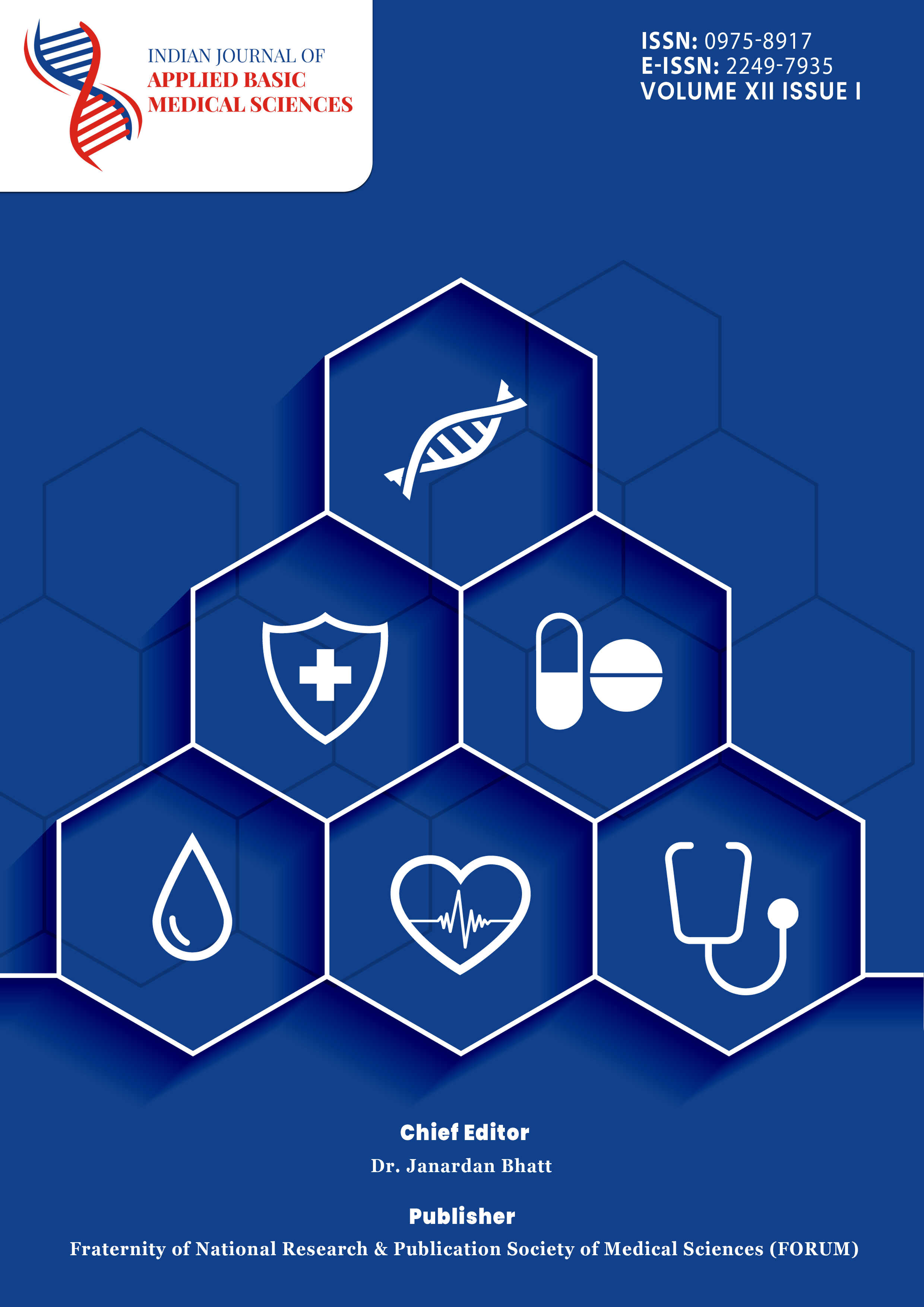PHYSIOLOGICAL ASSESSMENT OF COMMON CAROTID ARTERY END DIASTOLIC VELOCITY, A HEMODYNAMIC PARAMETER, WITH FUTURE RISK FOR THE DEVELOPMENT OF CEREBROVASCULAR STROKE
DOI:
https://doi.org/10.26860/s2vk6m90Keywords:
CCA EDV, CV stroke, HbA1c, HDL, LDL, Total cholesterol, triglycerideAbstract
Background: Low End diastolic velocity of common carotid artery is potential hemodynamic marker of intracranial resistance and associated with ischemic stroke. Abstracts: Aim: Assessment of Common carotid artery end diastolic velocity, a hemodynamic parameter, with the future risk for development of Cerebrovascular stroke. In order to assess common carotid artery, end diastolic velocity, we have evaluated age, BMI, W/H, blood pressure, lipid profile and HbA1c in CV Stroke and control subjects. Material method: The present study was conducted on 30 CV Stroke patients (Group A) and 30 non stroke hypertensive and diabetic patients (Group B) . CCA End diastolic velocity was assessed in each group by Doppler ultrasound machine. BMI and W/H was measured according to WHO protocol. Blood pressure was measured by sphygmomanometer. Lipid profile and HbA1c was done by autoanalyser machine. Result: CCA End diastolic velocity in Group A and group B was found to be 10.49±6.02 & 17.70±4.18 and 12.59±3.47 & 21.47±5.21 in right and left side respectively. The data was highly significant (p<0.0001). Age in Group A and B was found to be 62.8±9.11 and 53.87±10.06 respectively (p=0.0007). BMI in Group A and Group B was found to be 27.93±3.24 and 28.52±3.87 respectively (p=0.5245). W/H in Group A and Group B was 0.88±0.042 and 0.89±0.04 respectively (p=0.3489). Systolic and diastolic blood pressure in both the groups was found to be 148.02±14.77 & 138.93±7.04 and 88.33±5.97 & 84.53 ±5.75 which was statistically significant with p value 0.003and 0.014 respectively. The difference between mean of two groups for HbA1c, HDL, LDL, triglyceride and total cholesterol in both the groups were 8.61±0.84 & 7.47±0.56, 38.7±5.42 & 49.91±8.333, 143.37±6.25 & 113.63±17.42, 136.63±12.11& 201.9±55.26 ,226.37±8.006 & 202.4±22.08 respectively which was statistically very significant(p<0.0001). Conclusion: Carotid hemodynamic alterations expressed in Common Carotid Artery End diastolic velocity should be screened for future risk for development of CV stroke in hypertensive and diabetic patients with advance age. These findings need to be confirmed by a prospective study.




